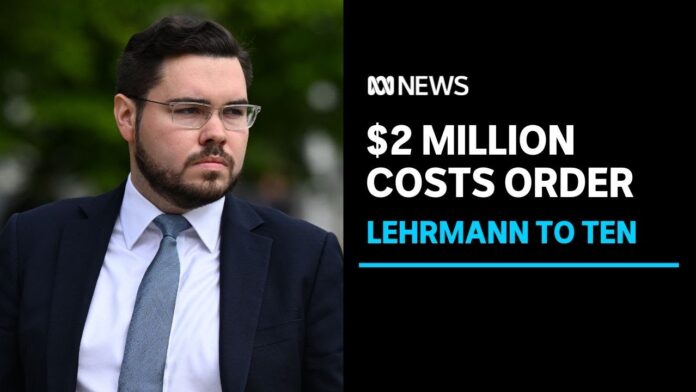The Federal Court rules on Network Ten’s costs, setting a $2 million payment despite original claims totalling $3.6 million
In a significant legal development, the Federal Court in Sydney has finalized the costs for Bruce Lehrmann’s unsuccessful defamation case against Network Ten, ordering him to pay $2 million. This decision comes after Network Ten’s lawyers disclosed that the actual costs incurred amounted to approximately $3.6 million, though they opted to heavily discount the amount during proceedings.
Bruce Lehrmann, a former Liberal staffer, brought the defamation suit against Network Ten and journalist Lisa Wilkinson following an interview with Brittany Higgins on The Project. During the interview, Higgins alleged she was raped at Parliament House, although Lehrmann was not explicitly named in her accusations.
The defamation case centred on Lehrmann’s claim that the interview implied his involvement in Higgins’ allegations, despite his innocence and the collapse of a 2022 trial that left no findings against him. However, Network Ten successfully defended itself by proving the truth of its statements regarding Higgins’ allegations, leading to Lehrmann’s defamation claim being dismissed.
Despite Lehrmann’s appeal against the ruling, the Federal Court has now resolved the costs issue, with Justice Michael Lee acknowledging the financial strain on Lehrmann, described as a person of modest means. Lehrmann’s legal team operated on a “no win, no fee” basis, emphasizing their client’s limited ability to meet substantial costs.
During the proceedings, Lehrmann’s lawyer, Paul Svilans, criticized Network Ten’s legal expenses, particularly highlighting charges incurred post-judgment, which he argued reflected excessive legal spending akin to a “Rolls Royce manner.” Svilans pointed out the presence of multiple lawyers and high daily fees for lead barristers, questioning the necessity and justification for such expenses.
In response, Network Ten’s lawyer, Zoe Grause, defended the legal fees as reasonable given the complexity of the case and denied any unnecessary duplication in legal representation. Justice Lee concurred with Network Ten’s assessment, acknowledging the complexity of the case and the efforts made to mitigate ongoing legal costs through a discounted settlement.
The $2 million lump sum awarded to Network Ten excludes GST and has already been paid in full by the network, amounting to $3,668,420.83. Meanwhile, the dispute over costs involving Lisa Wilkinson and Network Ten remains unresolved, continuing to add complexity to the aftermath of this high-profile legal battle.
Analysis:
Legal Perspective: Legally, the outcome underscores the financial risks associated with defamation suits and the stringent standards for proving defamation claims in Australia. The court’s decision to award costs, despite discounting the amount, reflects the standard practice of the successful party recovering substantial legal expenses.
Media and Public Perception: From a media standpoint, the case has highlighted the impact of high-profile defamation disputes on media organizations and their reporting practices. It underscores the importance of accurate reporting and the legal protections available to media outlets facing defamation claims.
Financial Impact: Financially, the substantial costs awarded to Network Ten underscore the potential economic repercussions of legal battles, particularly on smaller parties or individuals with limited financial resources. The case serves as a reminder of the financial risks and burdens involved in protracted legal disputes.
Ethical Considerations: Ethically, the case raises questions about the balance between freedom of the press and the rights of individuals to protect their reputations. It prompts discussions on the responsibilities of media organizations in reporting sensitive allegations and the legal safeguards available to individuals accused of wrongdoing.
Political Ramifications: Politically, the case intersects with broader debates about media regulation and accountability, influencing public perceptions of media integrity and the legal recourse available to individuals affected by media coverage.
